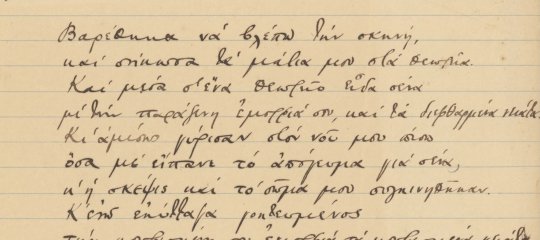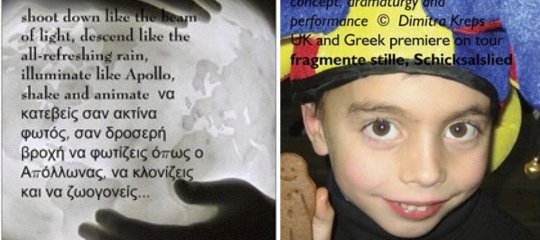ΑΥΤΟΝΟΜΟ ΠΑΝΕΠΙΣΤΗΜΙΟ ΜΑΔΡΙΤΗΣ
Μεταπτυχιακό Πρόγραμμα Νεοελληνικών Σπουδών
Τμήμα Κλασικής Φιλολογίας
Αυτόνομο Πανεπιστήμιο Μαδρίτης
Δήμητρα Κοκκινίδου
6 Νοεμβρίου 2003
Το Αυτόνομο Πανεπιστήμιο της Μαδρίτης ήταν το πρώτο στην Ισπανία που συμπεριέλαβε τις νεοελληνικές σπουδές σε μεταπτυχιακό επίπεδο. Το σχετικό πρόγραμμα λειτούργησε πρώτη φορά πέρσι. Φέτος οι προοπτικές διαφαίνονται ακόμη θετικότερες. Σε ανταπόκριση μάλιστα του αυξανόμενου ενδιαφέροντος εκτός Μαδρίτης υπάρχει η δυνατότητα φοίτησης εξ αποστάσεως.
Προσφέρονται τρεις τίτλοι σπουδών:
Δίπλωμα Επιμόρφωσης I και II (Diploma de Formación Superior I και II) και Μεταπτυχιακό Δίπλωμα (Máster).
Η διάρθρωση του προγράμματος έχει ως εξής:
- Δίπλωμα I
Διδακτικές μονάδες: 22
Διάρκεια: 1 έτοςΥποχρεωτικά μαθήματα:
Eλληνική γλώσσα Ι 10 δ.μ.
Ιστορία της σύγχρονης Ελλάδας 6 δ.μ.
Νεοελληνική λογοτεχνία 6 δ.μ. - Δίπλωμα ΙI
Διδακτικές μονάδες: 30
Διάρκεια: 1 έτοςΥποχρεωτικά μαθήματα:
Eλληνική γλώσσα ΙΙ 10 δ.μ.
Ιστορία της σύγχρονης Ελλάδας 6 δ.μ.
Νεοελληνική λογοτεχνία 6 δ.μ.
Προσφερόμενα σεμινάρια:
Γεωγραφία της Ελλάδας 2 δ.μ.
Πολιτισμός και κοινωνία της σύγχρονης Ελλάδας 1 δ.μ.
Ελληνική πολιτική 2 δ.μ.
Ελληνική οικονομία 2 δ.μ.
Βυζαντινή ιστορία 2 δ.μ.
Βυζαντινή φιλολογία 2 δ.μ. - Μεταπτυχιακό δίπλωμα
Διδακτικές μονάδες: 60
Διάρκεια: 2 έτηΥποχρεωτικά μαθήματα:
Eλληνική γλώσσα ΙΙΙ 10 δ.μ.
Ιστορία της σύγχρονης Ελλάδας 6 δ.μ.
Νεοελληνική λογοτεχνία 6 δ.μ.
Γραμματική 5 δ.μ.
Μετάφραση 5 δ.μ.Προσφερόμενα σεμινάρια:
Γεωγραφία της Ελλάδας 2 δ.μ.
Πολιτισμός και κοινωνία της σύγχρονης Ελλάδας 1 δ.μ.
Ελληνική οικονομία 2 δ.μ.
Ελληνική πολιτική 2 δ.μ.
Νεοελληνικό μυθιστόρημα 2 δ.μ.
Νεοελληνική ποίηση 2 δ.μ.
Λογοτεχνικά κείμενα 4 δ.μ.
Κ. Π. Καβάφης 2 δ.μ.
Κυπριακή λογοτεχνία 1 δ.μ.
Ιστορία της ελληνικής γλώσσας 1 δ.μ.
Ελληνικός κινηματογράφος 1 δ.μ.
Βυζαντινή ιστορία 2 δ.μ.
Βυζαντινή φιλολογία 2 δ.μ.
Βυζαντινή τέχνη 2 δ.μ.Γραπτή εργασία 3 δ.μ.
Αναλυτική παρουσίαση του προγράμματος 2003-2004 στα ισπανικά, στην διεύθυνση http://www.ffil.uam.es/clasicas/noticias_p.htm
- Εισέλθετε στο σύστημα για να υποβάλετε σχόλια










